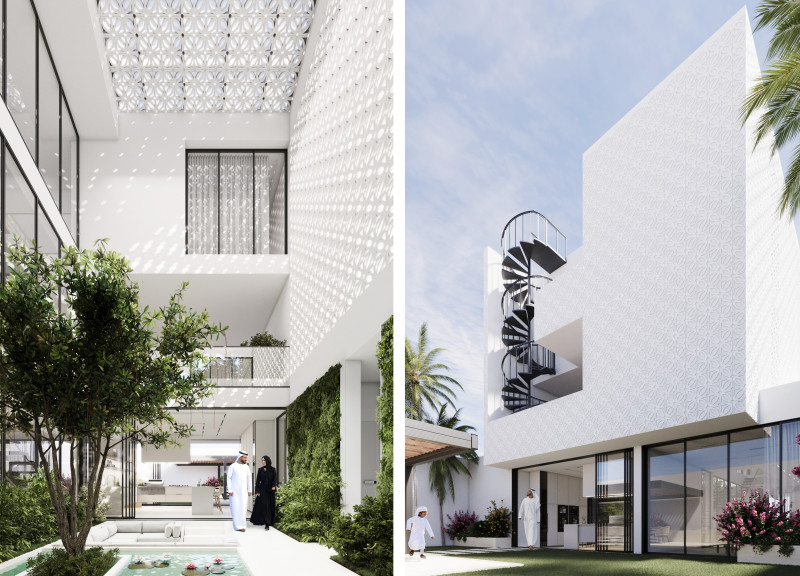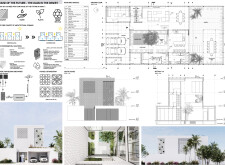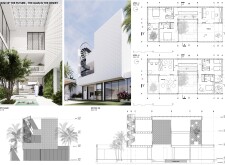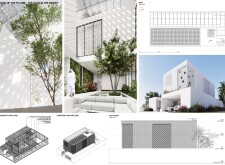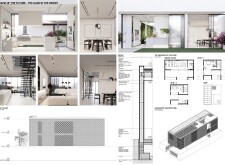5 key facts about this project
**Overview**
Located in a hypothetical context in Dubai, the design of this residential concept addresses the environmental challenges and cultural nuances inherent to the region. Aimed at creating a balanced living environment, the project incorporates modern architectural principles while emphasizing sustainability and user comfort. The project framework promotes individual expression alongside communal interaction to meet the varying needs of future residents.
**Spatial Organization and User Experience**
The ground floor is structured around a central courtyard that functions as a communal oasis, encouraging socialization and relaxation. Key features include a garden pond that enhances tranquility and open-plan dining and living areas that facilitate a fluid transition between indoor and outdoor spaces. The upper levels offer balconies and terraces aimed at fostering intimate connections with nature, while a spiral staircase not only serves as a visual focal point but also maintains an open flow throughout the home's levels.
**Material Consideration and Environmental Approach**
The building employs a robust structural framework of concrete and steel, tailored to withstand the desert climate. The facade combines architectural concrete and perforated panels that provide both aesthetic appeal and functionality, filtering natural light while ensuring privacy. Interior spaces utilize a smooth plaster finish and large glass windows to enhance the flow of natural light and maintain views of landscaped areas.
Sustainability is a core focus, evident through features such as solar water heating systems and greywater recycling, which are pivotal in reducing the environmental footprint. The thoughtful integration of local flora through xeriscaping reinforces water conservation efforts while creating a lush oasis ambiance amidst the arid surroundings. Additionally, the adaptable design allows for future modifications to accommodate family growth, aligning with the dynamic nature of urban development in Dubai.


